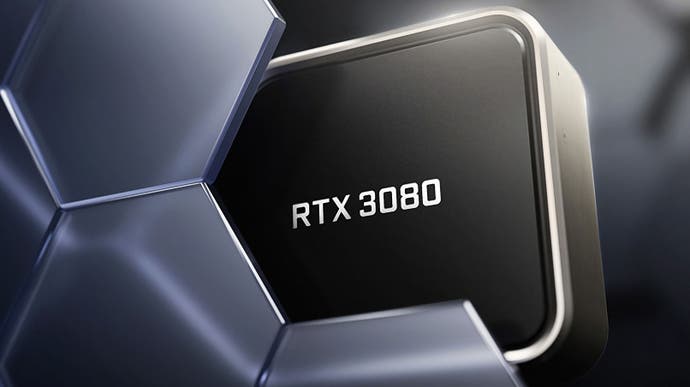GeForce Now RTX 3080 review: is cloud gaming finally a viable alternative?
Nvidia's premium offering vs local gaming, xCloud and Stadia.
Is cloud gaming finally a viable alternative to the local experience? The recent release of the new premium RTX 3080 tier for GeForce Now sees Nvidia push online streaming specs higher than we've ever seen them before: more compute, enviable ray tracing performance, AI upscaling via DLSS, 1440p120 and 4K60 HDR functionality. Meanwhile, Nvidia makes big claims about GeForce Now actually outperforming Xbox Series X in terms of input lag. In a world where PC upgrade prices are sky-high - if you can find the hardware to begin with - maybe Nvidia's £89.99/$99.99/€99.99 six month subs might be worth considering?
But make no mistake, GeForce Now may improve the cloud experience, but it's still facing the same fundamental challenges as other services. Video compression, streaming hitches and some degree of lag are present. Inevitably, the quality of the experience will depend on the internet connection you have. In bandwidth-constrained scenarios, playing any cloud-based system while the connection is in use elsewhere within the home can also cause issues.
First up, let's talk specs as it's fair to say that the RTX 3080 tier does deliver a substantial hardware upgrade over competing services. CPU-wise, the servers are based on a Ryzen Threadripper Pro 3955WX CPU with 16 cores, paired with 28GB of system memory. The GPU isn't actually an RTX 3080, but it is based on the same GA102 silicon. Games running on the system identify it as an Nvidia A10G, a server-class product with 9216 CUDA cores up against the 8704 on the standard RTX 3080. The desktop GPU's 10GB/12GB variants are effortlessly outclassed by this cloud-based variant's 24GB of GDDR6 memory as well - a surprise bonus. However, being a server-based product, the A10G may run at lower clocks, while its lower-bandwidth GDDR6 memory will almost certainly have an impact.
| Cloud vs Desktop Spec Comparison | GeForce Now RTX 3080 'A10G' | Desktop RTX 3080 |
|---|---|---|
| GPU | GA102 | GA102 |
| CUDA Cores | 9216 | 8704 |
| VRAM | 24GB GDDR6 | 10GB GDDR6X |
| Memory Bus | 384-bit | 320-bit |
| Bandwidth | 600GB/s | 760GB/s |
| Base Clock | 1320MHz | 1440MHz |
| Boost Clock | 1710MHz | 1710MHz |
The performance of this enviable hardware tops out at either 1440p at 120Hz on a PC (or 1600p for MacBook streaming, curiously enough) while 4K HDR is only currently possible via an Nvidia Shield. Our fingers are crossed that Nvidia removes the 4K limitation, allowing PCs with the required decoding performance to receive the experience currently allotted to Shield owners.
Does the cloud-based RTX 3080 run as fast as the desktop version?
As for how much of the desktop RTX 3080 performance you can expect from GeForce Now, you can see both our 1440p and 4K results below, tested on PC and Shield respectively. Owing to the streaming nature of GeForce Now, our standard FCAT benchmarking system doesn't work here, so in both desktop and cloud tests, we simply note the results of the in-game benchmarks themselves. The results? Well, there can be quite a gap between the desktop RTX 3080 and its cloud equivalent in 1440p rendering - likely down to the lower memory bandwidth on the cloud GPU, along with the performance limits of the Ryzen 3000 CPU architecture (our desktop results used a Core i9 10900K locked to 5.0GHz on all cores). The desktop RTX 3080, paired with the Intel chip can deliver up to 26 percent more performance, but the differential varies depending on the game. Indeed, in the case of Watch Dogs Legion running with ray tracing, the cloud system actually has a sizeable advantage.
At 4K, the gap closes somewhat. The CPU limitation from the older Ryzen architecture likely presents far less of an issue and both GPUs can flex their muscles. The desktop rendition of the RTX 3080 is still faster but in our admittedly limited testing, the variance closes to 5.6 percent to 12.5 percent faster. Again, it's curious to see at 4K, the ray traced Watch Dogs experience sees the cloud GPU pull ahead. A further point of interest is that the Assassin's Creed Valhalla benchmark also logs GPU temperatures, where we note that the cloud GPU runs in the low to mid 50s Celsius in the datacentre, around 20 Celsius lower than the desktop RTX 3080 running in an open test case. Of course, acoustics and temperatures at the player side can be minimal to non-existent if using Nvidia Shield or mobile device.
| 1440p Benchmarks | GFN RTX 3080 | RTX 3080 Desktop | Desktop Advantage |
|---|---|---|---|
| Shadow of the Tomb Raider/Highest/TAA | 120fps | 146fps | 21.6% |
| Shadow of the Tomb Raider/Highest/TAA/RT Max | 88fps | 98fps | 11.4% |
| Watch Dogs Legion/Ultra/TAA | 76fps | 82fps | 7.9% |
| Watch Dogs Legion/Ultra/TAA/RT Max | 58fps | 50fps | -13.2% |
| Assassin's Creed Valhalla/Ultra High/TAA | 80fps | 92fps | 15.0% |
| The Division 2/Custom/TAA | 101fps | 126fps | 24.8% |
| 2160p Benchmarks | GFN RTX 3080 | RTX 3080 Desktop | Desktop Advantage |
|---|---|---|---|
| Shadow of the Tomb Raider/Highest/TAA | 79fps | 86fps | 8.9% |
| Shadow of the Tomb Raider/Highest/TAA/RT Max | 52fps | 55fps | 5.8% |
| Watch Dogs Legion/Ultra/TAA | 54fps | 56fps | 3.7% |
| Watch Dogs Legion/Ultra/TAA/RT Max | 47fps | 46fps | -2.2% |
| Assassin's Creed Valhalla/Ultra High/TAA | 56fps | 63fps | 12.5% |
| The Division 2/Custom/TAA | 72fps | 76fps | 5.6% |
Image and Graphics Settings Comparisons
What about the situation with image quality comparisons for GeForce Now? We stacked up the RTX 3080 tier against competition from Google Stadia and Microsoft's xCloud, but it should be stressed that all three services have distinct limitations in their title line-up. In theory, any Xbox 360, Xbox One or Xbox Series game can be hosted on xCloud, but in practise, only a subset of Game Pass titles are available for streaming (though at least streaming is a value-added bonus for Xbox, rather than a core part of the subscription). Meanwhile, Stadia titles need to be ported to the system and the prospects of ports for future titles aren't as forthcoming.
As for the RTX 3080 tier for GeForce Now, the good news is that existing titles in your Ubisoft Connect, Steam or Epic Game Store can be streamed, meaning that purchases from your existing PC library transfer over seamlessly to the Nvidia service. However, the bad news is that publishers need to whitelist specific games for use on the service - and there are plenty of gaping holes in the line-up.



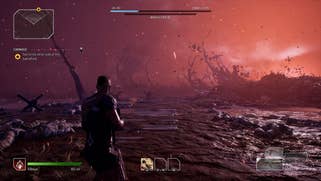
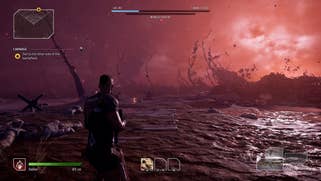






Kicking off with image quality, it's worth stating that xCloud still seems to be work-in-progress - and even if the Series X silicon in the cloud is rendering at 4K, the image gets downscaled to 1080p. However, selected titles do seem to support 120Hz. There's the sense here that xCloud's streaming technology is somewhat limited while the processing power at rhe server-end is very good. In this regard it beats Stadia easily, but doesn't offer the 4K streaming option that Google has had since day one with its Pro subscription. To put it into perspective, Outriders is a 60fps experience on GeForce Now and xCloud, but the 4K output option for Stadia only delivers 1440p at 30fps (though 1080p60 is an option).
Outriders give us an interesting comparison point between all three streaming services. Firstly, there's the resolution and features side. GeForce Now uniquely lets you tinker with all settings as you would on an actual PC, so there's flexibility to trade performance against resolution, or graphics settings. In this case, GeForce Now 3080 capably handles 4K resolution at 60fps with DLSS quality mode enabled. All settings are maxed out too, and this gets beamed over with a 4K60 stream to our Shield and it's easily the best image of the tested services. Compression artefacts can impact as with all streaming platforms, but based on Outriders testing, GeForce Now leads the pack.
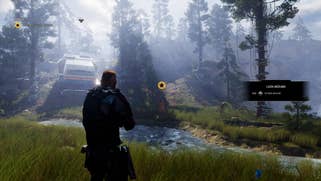
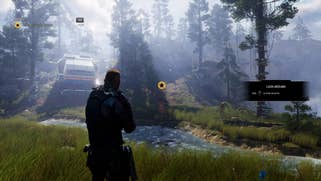






Beyond resolution and compression, running at max settings also means a richer image. Both Stadia and xCloud run Outriders at a mixture of medium and high settings by comparison. The GeForce Now gameplay meanwhile boosts effects like grass density, while anti-aliasing quality and depth of field also see improvements. Nvidia's advantage becomes even more pronounced when looking at Control Ultimate Edition, where we can combine ray traced reflections and DLSS to transformative effect - a big improvement over Stadia. Meanwhile, the Game Pass/streamable version of Control wasn't Series X-enabled in our testing, meaning no 60fps performance or 30fps RT versions.
Input Lag Testing: Local PC/Xbox vs GeForce Now/Stadia/xCloud
We tested latency by using a second generation Nvidia LDAT sensor, which straps to the test monitor and measures latency from button press to a significant change in luminescence on-screen (such as the muzzle flash from a gun, for example). So, the results seen here account for complete end-to-end latency, including the display lag on our monitor. This is a crucial component of the testing as some of Nvidia's claims here have been extraordinary. The firm says that Destiny 2 on GeForce Now has input latency that's actually lower than the local Xbox Series X experience - whether you're gaming on their service at 60Hz or 120Hz. Part of this may well be down to Nvidia's Reflex technology - an input lag reduction technology which doesn't have an widely used equivalent on consoles (Microsoft's DLI has seen sparing support thus far).
I'm amazed to say that Nvidia's results are very much repeatable in my testing. A native Xbox Series X test running at 60Hz gets an 85ms average - from a trigger pull to the first flash of gunfire. Xbox is far off a native PC result, which comes in at just 49ms. And the big surprise is that GeForce Now using the PC app beats a local Xbox Series X in latency, coming in at 81.7ms - while a Shield test is comparable to Xbox at 86ms. On the face of it then, inherently lower native PC input lag, plus cloud latency is still lower than Xbox, which seems to be rather high for some reason - a situation borne out by Stadia also delivering competitive results. Xbox Series X does triumph at 120Hz though, the issue there being that high frame-rate support is only available in the PvP Crucible mode. With GeForce Now, the entire game can be played at 120Hz.
| Destiny 2 Avg Latency (ms) | Native PC | Native Xbox Series X | GeForce Now PC App | GeForce Now Shield | Stadia Chrome Browser |
|---|---|---|---|---|---|
| 60Hz | 49.0 | 85.0 | 81.7 | 86.2 | 87.7 |
| 120Hz | 31.8 | 40.6 | 59.5 | 72.3 | N/A |
Before we move on to our next test, there's another interesting data point. By comparing the native PC input lag result to the GeForce Now equivalents, the differential essentially isolates the cloud lag - the time taken by transmitting and receiving data, along with the video compression overhead. The results are the lowest we've seen on any streaming service. At 60Hz, it's around 32 to 37ms for GeForce Now, making it the fastest cloud service we've tested... on Destiny 2 at least. Results vary more widely at 120Hz when tested on Nvidia Shield up against the native PC app, but remarkably, on PC we're seeing cloud latency drop under 30ms. It's an admirable result, but do they translate to other games? We chose Outriders next as pretty much the only high profile title supported on GeForce Now, Stadia and xCloud (Destiny 2 is no longer on Game Pass and alas, not streamable any more).
Outriders should be more challenging for GeForce Now this time around; there's no lower latency Reflex support here. There's also no 120Hz support on Stadia or xCloud, while of course, GeForce Now can simply tap into the 120Hz functionality built into the PC platform. Still, in a 60Hz-only test, a local Xbox Series X gives us a reading of 107ms on average, against 103ms on the GeForce app. The Shield result again lags behind the PC app test by about 5ms - putting it on par with a local Xbox at 107ms. But as for xCloud? This puts in the worst latency readings on the table right now - consistently behind all the rest at 172ms. It's evident right away once you boot a game.
| Outriders Latency at 60Hz (ms) | Native PC | Native Xbox Series X | GeForce Now PC App | GeForce Now Shield | xCloud Xbox Series X | Stadia Chrome Browser |
|---|---|---|---|---|---|---|
| Average | 49.3 | 107.9 | 103.0 | 107.8 | 172.4 | 141.8 |
Outriders 2 is just about playable over xCloud, but the level of detachment from what you're playing on-screen sticks out next to GeForce Now - and even Stadia, which cuts that latency down to 140ms. Again, similar to Destiny 2, there is the sense that Xbox Series is significantly laggier than it should be. Typically, we should see 50-80ms results for a 60Hz title on console - 107ms is definitely 30fps territory. In terms of the cloud overhead, GeForce Now appears to add around 50ms of latency based on this Outriders testing - not as impressive as Destiny 2, but still a good chunk faster than the competition.
Nvidia GeForce Now RTX 3080: the best streaming system we've played
First up, let's talk about the obvious and undeniable advantages of the GeForce Now RTX 3080 tier. Yes, there's a significant price premium - it's effectively £15 per month - but you are getting a very powerful gaming PC that would set you back thousands. While the CPU side is not best in class (Ryzen 5000 and the most modern Intel processors will be significantly faster), it's a class apart from other cloud alternatives, stacking up well against Xbox Series X and PlayStation 5. It's easily good enough for 60fps in most titles, and will get you to 120fps in a large amount of games. Moreover, the GPU is leaps and bounds ahead: even if performance can't quite match the desktop version of the RTX 3080, it's a leap over the competition in Stadia's current server array, while RT and DLSS support take this system to the next level in supported titles.
Stacked up against the major competition, the streaming side of the equation also sees Nvidia pull ahead. In terms of image quality, we've been impressed by Stadia's 4K output previously, but GeForce Now seems capable of delivering clear imagery with less artefacting. The input lag results are also best in class. In best case scenarios such as Destiny 2, at 120Hz with a well-optimised title that also supports Nvidia Reflex, the difference between a local PC experience and a cloud-streamed alternative can drop to less than 30ms - which is remarkable. Even at 60Hz, cloud lag in the region of the mid-30s is astonishingly good. Outriders also demonstrates that not every game can run so fast, but even so, results there were still better than the competition. Perhaps what's more surprising here is that in the case of both Destiny 2 and Outriders, console latency was much, much higher than expected. A 60fps game running locally on Series X should outperform any streaming system also running at 60fps, but that doesn't seem to be happening in both of the titles tested here (but please note, input lag will be more competitive in other titles based on legacy testing).
On a more global level, integration with existing gaming platforms is important. Microsoft's xCloud impresses because it is essentially an Xbox in the cloud, meaning that game progress and achievements automatically synchronise between servers and local consoles, while multiplayer gaming is similarly seamless. GeForce Now taps into existing systems (Steam, Epic, Ubisoft Connect), allowing for similar features. The only snag here is the support for multiple storefronts does make opening a game feel a little disjointed, and sometimes depends on pulling up a keyboard and mouse to proceed to the game itself. Also a shame is that not every game on those storefronts is streamable on GeForce Now and while alternative 'streaming PCs' are available where you can install what you like, specs and prices on the likes of the well-regarded Shadow can't compete with Nvidia's offering.
Ultimately, it's a tough call to give up your local hardware in favour of any streaming alternative, no matter how good it is. You're exchanging system ownership for rental - and while image quality with GeForce Now is best-in-class, we're still a long way off the absolute precision offered by a local system. The fact that you're reliant on a decent internet connection (and ideally one that isn't being used elsewhere in the home at the same time) may also be a dealbreaker. However, at its best, GeForce Now delivers a really good experience. Seeing it in action and appreciating what it's doing behind the scenes, it's a technological marvel.
